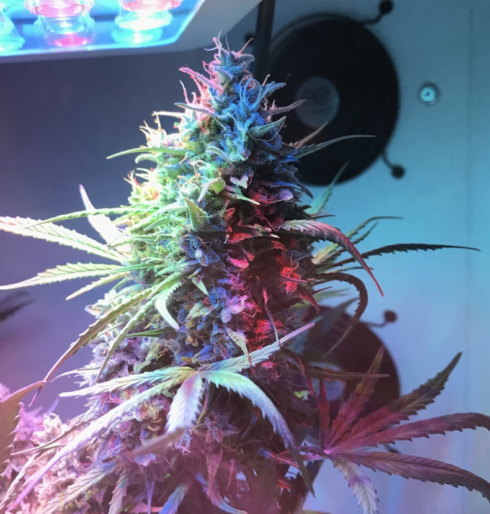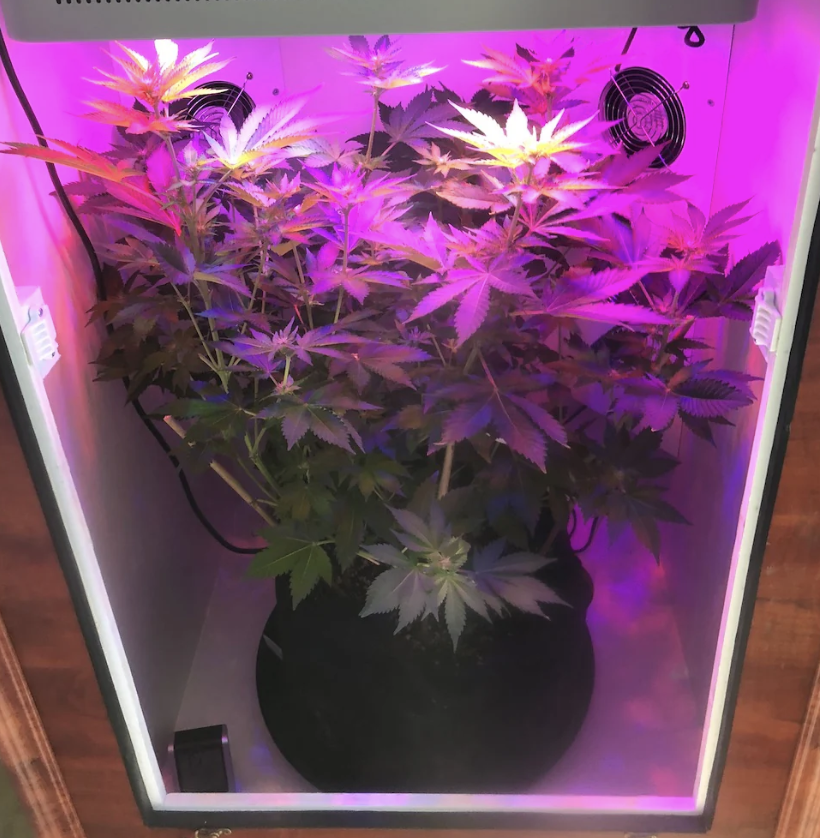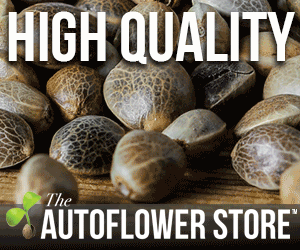Autoflowering seeds have become hugely popular among novice and experienced growers alike. These seeds are a bit different from the regular seeds you might be familiar with. They have a unique ability to begin flowering on their own, without changes in the light cycle. This characteristic makes them incredibly easy to grow, which is why they are often recommended for beginners.

Originally, autoflowering seeds were developed by crossbreeding Cannabis ruderalis, a strain native to Russia, with more traditional cannabis strains. The result is a plant that transitions from the vegetative stage to the flowering stage automatically based on its age, rather than the amount of light it receives. This trait is particularly useful for those who want faster harvests or have limited growing conditions.
So, why should you consider autoflowering seeds? First, they tend to have a shorter growing cycle, usually completing the process from seed to harvest in around 8-10 weeks. This quick turnaround is ideal if you’re eager to enjoy the fruits of your labor as soon as possible. Second, their shorter stature makes them perfect for indoor growing or discreet outdoor spots. Lastly, autoflowering plants are generally more resilient and require less maintenance, allowing even those with little growing experience to achieve rewarding results.
In summary, autoflowering seeds provide an excellent way to simplify the growing process. Whether you’re a newcomer looking for an easy entry into cannabis cultivation or a seasoned grower interested in quick and efficient harvests, these seeds offer plenty of benefits to meet your needs.
Selecting the Right Autoflowering Seeds
Choosing the right autoflowering seeds is a critical step that sets the foundation for a successful grow. There are several factors to consider to ensure you get the best possible results.
First, let’s talk about strain selection. Different strains offer different benefits, from varying THC and CBD content to unique flavor profiles. Researching strains that meet your specific needs is key. For instance, if you’re looking for a more relaxing experience, Indica-dominant strains might be your go-to. Conversely, Sativa-dominant strains are often praised for their uplifting effects.
Where you get your seeds is another crucial consideration. Always purchase from reputable seed banks to guarantee quality and authenticity. Some well-known ones include Seedsman, Dutch Passion, and Royal Queen Seeds. These suppliers offer extensive catalogs and customer reviews to help you make informed choices.
Now, let’s dive into genetics. Autoflowering seeds come in a range of genetic compositions, and understanding this can profoundly impact your grow. Some strains are bred for high potency, while others focus on yield or speed. Pay attention to these details: high-quality genetics can make a significant difference in resilience against pests and diseases, yield size, and overall plant health.
If you’re particular about environmental conditions, ensure you pick strains suited to your climate. Some autoflowering strains are more tolerant of colder environments, while others thrive in warmer conditions. Matching the strain to your growing environment minimizes stress and increases your chances of a robust harvest.
Lastly, don’t underestimate the importance of customer reviews and forums. Other growers’ experiences can provide invaluable insights into what you can expect from certain strains and seed banks. Their tips might save you time and resources, especially if you’re new to growing autoflowering plants.
In summary, spending some time on research and selecting the right seeds tailored to your specific needs and conditions can make a huge difference in your growing journey.
Preparing for Planting
Setting up your growing space effectively is crucial for cultivating healthy autoflowering plants. Whether you’re growing indoors or outdoors, preparing your environment in advance helps ensure a smooth growing process.
First, consider the optimal growing conditions for autoflowering seeds. These plants prefer a stable climate with temperatures ranging between 70-85°F (20-30°C). Consistent temperature control is important, especially for indoor grows. Humidity levels should be kept between 40-60% during the vegetative stage and reduced to around 40% during flowering to prevent mold and mildew.
Next, gather all necessary tools and materials. You will need quality pots, ideally around 3 gallons (11-15 liters) in size for optimal root development. A good-quality soil mix is essential—look for one that is light and well-aerated. Some popular choices include soil blends specifically designed for cannabis, which often contain the right mix of nutrients and pH levels. Additionally, consider investing in nutrient supplements tailored for autoflowering plants to support their rapid growth cycle.
Soil preparation is another critical step. Autoflowering plants thrive in well-drained soil with a pH level between 6.0 and 7.0. Start by filling your pots with soil, leaving a couple of inches at the top to prevent overflow when watering. You might want to mix in some perlite or vermiculite to improve drainage and root oxygenation.
Nutrient requirements differ slightly from other types of cannabis. Autoflowering seeds generally need fewer nutrients because of their smaller size and faster life cycle. Begin with a light feeding schedule and gradually increase nutrient concentration as the plants grow. Overfeeding can lead to nutrient burn, which stunts growth and reduces yield. Keep an eye on your plants’ leaves for any signs of nutrient deficiencies or excesses and adjust your feeding regimen accordingly.
In summary, taking the time to prepare your growing conditions, tools, and soil properly will set the stage for a successful grow. Proper setup can significantly impact the health and yield of your autoflowering plants.
Planting Autoflowering Seeds
Correctly planting your autoflowering seeds is foundational for a successful grow. Starting with the basics, begin by soaking your seeds in water for about 24 hours. This helps to soften the shell and encourage germination. Once soaked, you can proceed to plant them directly into the soil or use the paper towel method until the seeds sprout.
If you choose to plant directly into the soil, make a small hole about half an inch deep. Place the seed in the hole with the pointed end facing down and then gently cover it with soil. The key here is not to pack the soil too tightly, as this can inhibit the seedling’s growth.
For those using the paper towel method, place the soaked seeds between two damp paper towels. Put the towels on a plate and cover them with another plate to maintain moisture. Check the towels regularly to make sure they stay damp. In a few days, you should see the seeds sprouting roots. Once the roots are about a quarter-inch long, it’s time to transfer them into soil.
Whether starting indoors or outdoors, consider your seed depth and spacing. Planting the seeds too deep can exhaust the seedling before it reaches the surface, while planting too shallow can lead to drying out. Maintain a spacing of about 12-18 inches between each plant to allow adequate room for growth and avoid competition for light and nutrients.
Indoor planting offers the advantage of controlled conditions. Keep the light source, whether it’s LED, HID, or fluorescent, about 18-24 inches above the seedlings. As they grow, adjust the light height to ensure they receive adequate light without burning the foliage. Outdoors, choose a sunny spot where the plants will receive at least 6-8 hours of direct sunlight daily.
Watering is the next critical step. Newly planted seeds require a moist but not waterlogged environment. Light watering with a spray bottle is effective to keep the soil evenly moist. Too much water can drown the seed, while too little can dry it out, so finding that balance is key.
In summary, successful planting of autoflowering seeds requires attention to detail in every step, from germination to initial watering. These foundational steps pave the way for a healthy and productive grow.
Caring for Autoflowering Plants
Once your seeds have sprouted, ongoing care is essential to ensure healthy growth. One of the first tasks is establishing a consistent watering schedule. It’s crucial to keep the soil moist but not waterlogged. Overwatering can lead to root rot, while underwatering can stress the plants. Aim for a balance by checking the soil’s moisture level regularly and adjusting your watering routine as needed.
Feeding your autoflowering plants the right nutrients is another cornerstone of proper care. These plants generally require fewer nutrients than regular strains, but a balanced feeding schedule is still vital. Start with a lower concentration of nutrients and gradually increase it as your plants grow. Look for nutrient mixes specifically designed for autoflowers, as they often contain the right proportions of essential elements like nitrogen, phosphorus, and potassium.
Lighting plays a significant role in the health of your plants. For indoor grows, maintain a light cycle of 18-20 hours of light per day during the vegetative stage. This can be reduced to 12 hours once flowering begins. Using LED or HID lights ensures the plants receive the correct spectrum of light for optimal growth. Outdoors, ensure your plants are in a spot where they receive plenty of sunlight throughout the day.
Dealing with pests and diseases is another aspect of plant care that shouldn’t be overlooked. Regularly inspect your plants for any signs of pests like aphids, spider mites, or whiteflies. Natural predators like ladybugs can be a good way to control pest populations without using harmful chemicals. For diseases, keep an eye out for symptoms such as discolored leaves or mold and treat them promptly with organic treatments or homemade remedies like neem oil.
Proper air circulation is important for preventing mold and mildew, especially in indoor setups. Use fans to keep the air moving around your plants, and make sure your grow space is well-ventilated. This not only helps in disease prevention but also strengthens the plant stems, making them more resilient.
Staying vigilant and observing your plants daily will help you catch potential issues early. Making small adjustments to your care routine as needed ensures that your autoflowering plants remain healthy and productive throughout their growing cycle.
Training Techniques for Better Yields
Maximizing the potential of your autoflowering plants often involves various training techniques aimed at improving yields. One of the most common and effective methods is Low-Stress Training (LST). LST involves gently bending and tying down the branches to create a flatter canopy. This allows light to penetrate deeper into the plant, promoting more even growth and increasing the number of viable bud sites.
Another popular technique is topping. This involves cutting off the top of the plant to encourage it to grow more side branches. While topping can be a bit stressful for the plant, it can significantly increase the yield when done correctly. It’s usually best to top autoflowers during the early vegetative stage to give them ample time to recover before flowering begins.
Pruning is also an essential practice. Removing the lower leaves and small branches that receive little light helps the plant focus its energy on the main bud sites. This not only improves air circulation but also reduces the risk of mold and pests.
Using supports like stakes or cages can help your plants handle the weight of heavy buds. As your autoflowering plants grow, their branches can become weighed down by the developing buds. Providing support ensures that the branches don’t break and that the plant remains healthy and productive.
Some growers also employ techniques like defoliation, where fan leaves are selectively removed to allow more light to reach the lower bud sites. However, this method should be used sparingly with autoflowers, as they have a shorter lifespan and may not recover as well from extensive leaf removal.
By implementing these training techniques thoughtfully, you can maximize the yield and quality of your autoflowering plants. Each method requires careful consideration and timing to ensure you don’t overstress your plants. Tailoring your approach to your specific growing environment and the strain you’ve chosen will yield the best results.
Understanding the Growth Cycle
Recognizing the different stages of growth for autoflowering plants is key for providing the right care at each phase. Autoflowering seeds go through three main stages: seedling, vegetative, and flowering.
The seedling stage is when your plant is most vulnerable. During this phase, it’s crucial to maintain consistent moisture and avoid overwatering, as the young roots are still developing. Good airflow and proper lighting are also important to encourage strong growth.
Next comes the vegetative stage, where you’ll see rapid foliage development. This phase typically lasts around two to four weeks. Providing adequate nutrients, particularly nitrogen, during this period supports leaf and stem growth. Adjusting the light height to prevent stretching and ensuring sufficient water without overwatering will promote vibrant, healthy plants.
The flowering stage is the last phase and arguably the most exciting as you’ll see buds forming. This stage usually starts around weeks 3-4 and continues until harvest. Switching to a nutrient mix rich in phosphorus and potassium will benefit bud development. Be mindful of humidity levels to prevent mold, especially as the buds become denser.
Monitoring your plants regularly for issues is essential. Look out for signs of nutrient deficiencies, pests, or diseases and address them promptly. By closely observing your plants, you can make necessary adjustments to your care routine to ensure a successful yield.
Maintaining a grow journal can be incredibly useful. Documenting the growth stages, any issues encountered, and the solutions applied can provide valuable insights for future grows. This practice helps you refine your techniques and improve your growing skills over time.

Harvesting and Curing
Knowing when to harvest your autoflowering plants can make a significant difference in the final quality of your buds. Timing is crucial; harvesting too early can lead to lower potency, while waiting too long can result in a less desirable flavor profile. Look for visual cues such as the color change in the trichomes. When most trichomes turn from clear to milky white with some turning amber, it’s usually the optimal time to harvest.
To harvest, start by cutting down the main stalk of the plant. Hang the entire plant upside down in a dark, well-ventilated room to dry. The ideal environment for drying should maintain a temperature between 60-70°F (15-21°C) and humidity around 50%. This process usually takes about a week but can take longer depending on the humidity levels.
Once the buds feel dry to the touch and the stems crack rather than bend, it’s time for curing. Trim the buds from the branches and place them in airtight glass jars. Store these jars in a cool, dark place, and open them daily for about 15 minutes to allow excess moisture to escape and fresh air to circulate. This process should be done for at least two weeks, though some growers prefer a longer curing period to enhance flavor and potency further.
Proper curing is crucial for developing the aroma and flavor of your buds. It also helps to reduce any harshness when smoking. The extra patience during the curing phase pays off with smoother, more enjoyable results.
Safe storage is also important to maintain the quality of your harvested buds. Keep the cured buds in airtight containers in a cool, dark place to preserve their potency and flavor. Properly stored, your buds can remain fresh for several months, if not longer.
Troubleshooting and FAQs
Growing autoflowering plants can sometimes present unexpected challenges. Understanding common problems and how to solve them ensures a more successful grow. One frequent issue is nutrient deficiencies. Yellowing leaves often indicate a lack of nitrogen, while browning edges can suggest potassium deficiency. Regularly check your plants and adjust your nutrient mix accordingly.
Pest infestations are another common problem. Spider mites, aphids, and whiteflies can wreak havoc on your plants. Regular inspections and organic or natural pest control methods like neem oil or insecticidal soap can keep these pests at bay.
Root issues are often linked to overwatering or poorly draining soil. If you notice wilting or yellowing despite proper feeding, consider the possibility of root rot and adjust your watering schedule or soil composition accordingly.
Flowering problems can also arise. Sometimes, plants may not begin flowering on schedule. Inconsistent light cycles or stress from overtraining can be the culprits. Ensuring a stable environment and gentle handling can mitigate these issues.
Here are some frequently asked questions to further guide you:
– How long do autoflowering seeds take to grow? Typically, they complete their cycle in 8-10 weeks from seed to harvest.
– Can I transplant autoflowers? While possible, it’s best to avoid transplanting to reduce stress. Plant your seeds directly into their final containers.
– How much light do they need? Autoflowering plants generally thrive on 18-20 hours of light daily during the vegetative stage and can benefit from a consistent light cycle throughout.
For additional guidance, numerous resources and forums offer community support and expert advice. Whether you’re dealing with a specific issue or just looking to optimize your grow, these platforms can provide valuable insights from experienced growers.
Kevin



